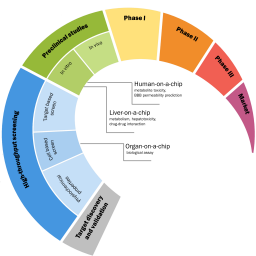In vitro and in silico liver models: Current trends, challenges and opportunities
Main Article Content
Abstract
Most common drug development failures originate from either bioavailability problems or unexpected toxic effects. The culprit is often the liver, which is responsible for biotransformation of the majority of xenobiotics. Liver may be modeled using liver-on-a-chip devices, which may include established cell lines, primary human cells, and stem cell-derived hepatocyte-like cells. The choice of biological material along with its processing and maintenance greatly influence both the device performance and the resultant toxicity predictions. Impediments to the development of liver-on-a-chip technology include problems with standardization of cells, limitations imposed by culturing, and the necessity to develop more complicated fluidic contours. Recent breakthroughs in the development of cell-based reporters, including ones with fluorescent labels, permit monitoring of the behavior of the cells embedded into the liver-on-a-chip devices. Finally, a set of computational approaches has been developed to model both toxic responses and the homeostasis of human liver as a whole; these approaches pave the way to enhance the in silico assessment of potential toxicity.
Article Details
Articles are distributed under the terms of the Creative Commons Attribution 4.0 International license (http://creativecommons.org/licenses/by/4.0/), which permits unrestricted use, distribution and reproduction in any medium, provided the original work is appropriately cited (CC-BY). Copyright on any article in ALTEX is retained by the author(s).


